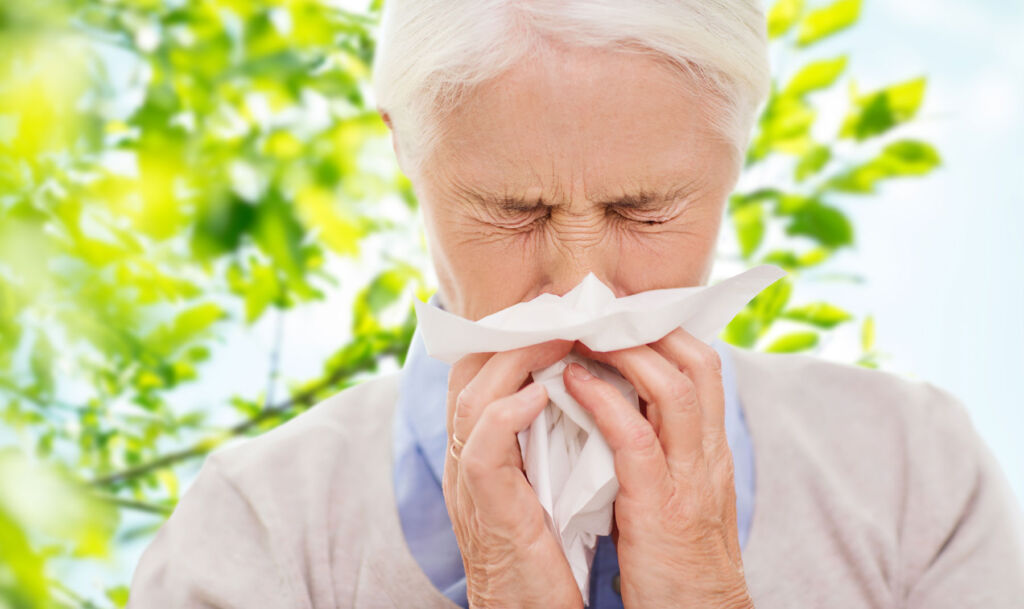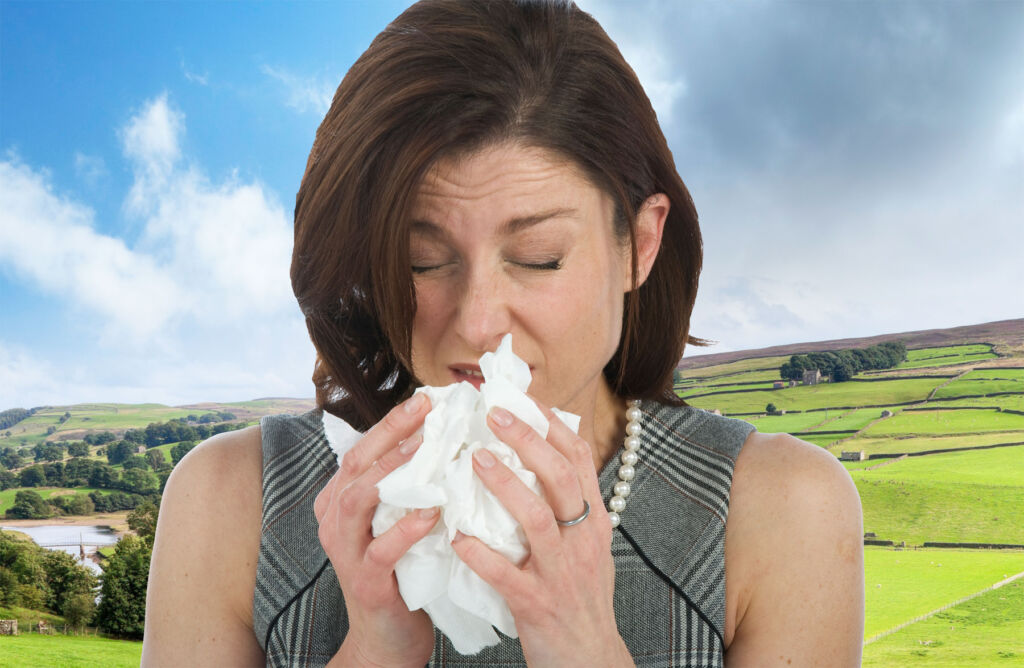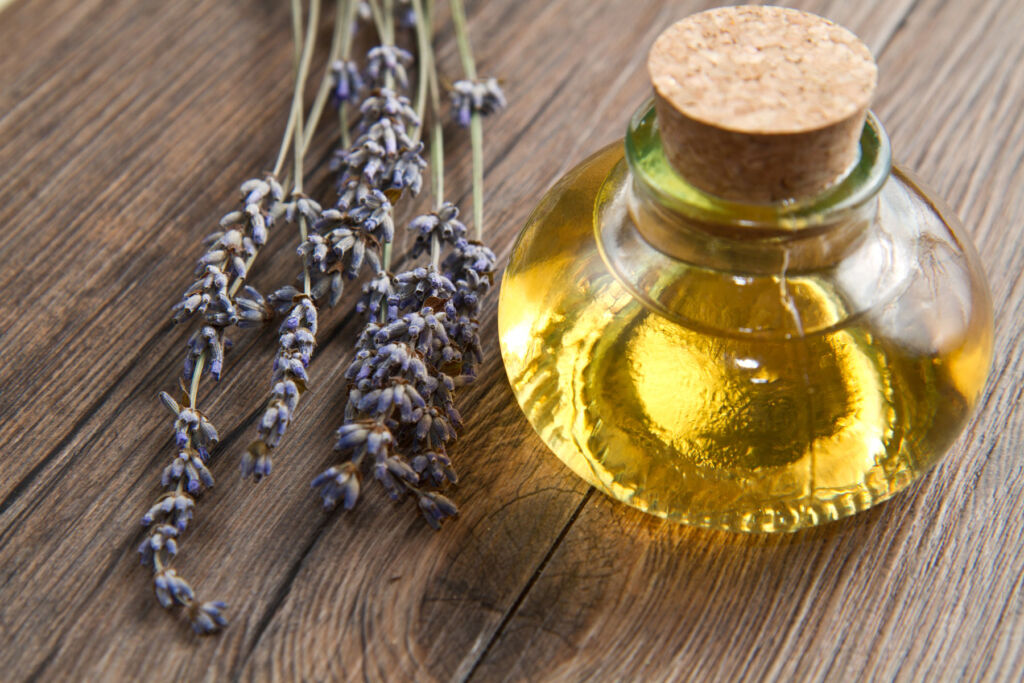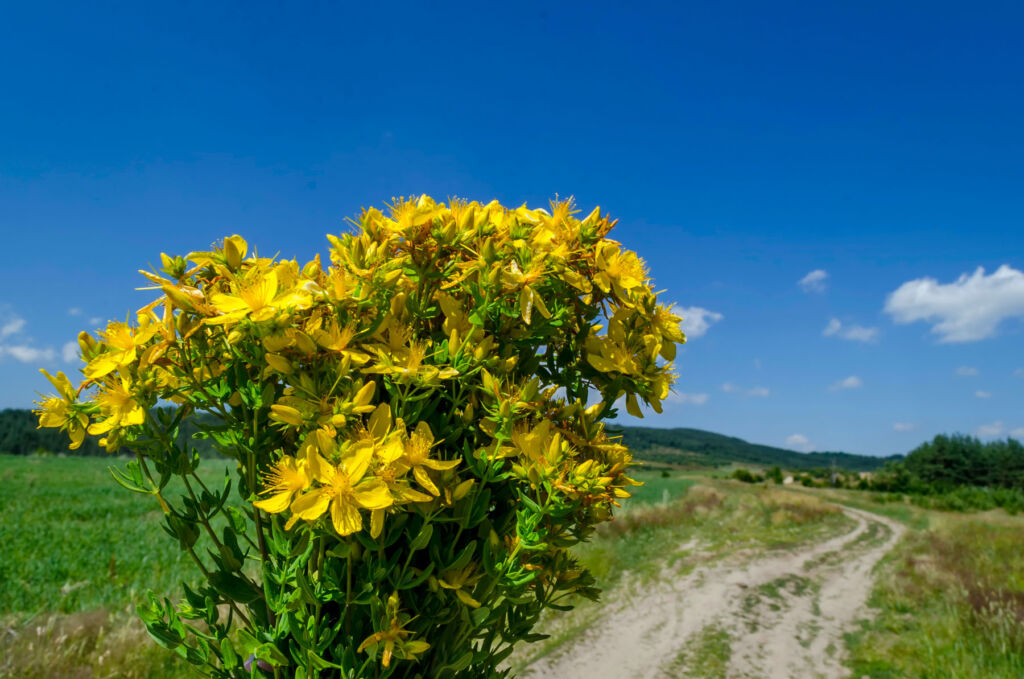
In the UK, more than 1-in-5 people suffer from an allergic condition. Allergies are nothing new and have likely been around since modern humans first walked the planet; however, thanks to our ingenuity, we found the help we needed inside nature’s larder. For this guide, Dr Nisa Aslam explains how we can still bust allergies naturally by harnessing the incredible power of plants.
If you struggle with allergies, then you’re certainly not alone. The UK, unfortunately, has some of the highest allergy rates in the world. In fact, over 20% of the UK population is affected by one or more allergic disorders [1], and worryingly, the rates of allergies keep rising.

Allergies can cause a whole host of life-disrupting symptoms. Think breathing difficulties, hives, itchy skin and headaches. Plus, these symptoms can occur at any time of year.
Unfortunately, many of us seem unaware of what could be causing the symptoms. Research from Puressentiel, the brains behind the evidence-backed plant-based health products for everyday wellness needs, shows that 47% of us experience sneezes, coughs or an itchy throat or eyes for no apparent reason. However, these are all classic signs of an allergy or an infection. On top of that, one in five (22%) report unexplained respiratory symptoms.

Hay Fever – caused by pollen from trees, grass and flowers – is likely to be the first allergy we all think about. But, particles in the home – such as mould or house dust mites – can trigger other allergies, too, as can our external environment. Pollution, too, is a key external allergy trigger.
GP Dr Nisa Aslam from the Puressentiel expert panel adds, “The cold winter months have provided a perfect environment for house-dust mites because we keep windows closed and heating on, and this increases the warmth and humidity they love. Condensation around windows and humidity also promote the growth of mould.
“Plant extracts and essential oils with recognised benefits for respiration and symptom relief get my recommendation for warding off or soothing allergy-related symptoms. What’s more, combining different essential oils can often enhance their efficacy.

“Essential oils – lavender, eucalyptus, lemon and geranium (pelargonium), to name a few – reduce the risk of respiratory issues by tackling common triggers for symptoms. These triggers can include airborne bacteria and viruses, fungal spores and house-dust mites.”
Here’s a fast summary of the key essential oils, all borne out of plants, that can help tackle some of the common allergy challenges, such as congestion and breathing issues:
Allergy aids:
Eucalyptus essential oil is antiseptic and an expectorant; it reduces mucus, helps open the airways, and eases breathing. The European Commission has approved its use for respiratory tract infections [2],[3].
Camphor was used as a fumigant during the Black Death. It’s still widely used in cold and decongestant solutions thanks to its antimicrobial and antiviral properties, and it’s been proven to reduce coughing. Its ability to penetrate the skin makes it particularly useful in balms for the chest [4].
Clove essential oil has powerful antimicrobial properties and has long been used to help respiratory ailments such as sore throats, sinusitis and colds. A study with clove essential oil showed activity against bacteria that cause respiratory tract infections [5],[6].
Menthol, another plant compound widely used because of its decongestant properties, has been proven to reduce nasal congestion and relieve the symptoms of upper respiratory tract infections [7]. Last year, a study published in the European Respiratory Journal found it also improves breathlessness in people with COPD [8].
Echinacea has long been used to treat cold symptoms common for those that suffer from allergies, and the European Medicines Agency has even confirmed that it “can prevent and improve the symptoms of cold more rapidly than placebo when taken early [9].”

Medical herbalist, plant health specialist and a member of the Puressentiel expert hub, Dr Chris Etheridge, notes, “We know that plants produce some extraordinarily beneficial natural compounds and chemicals, and many pharmaceutical medicines are simply synthetic derivatives of phytochemicals, but there is also a lot of evidence to show that the synergy which comes from combining different essential oils will often enhance their efficacy.
That’s why the clinically backed Puressentiel products, like their respiratory and purifying air ranges, get my recommendation.”
Dr Nisa Aslam adds, “Another big plus with plant-based products is that they are also very well tolerated and with many suitable for use in infants.”

What’s what with allergies?
Hay Fever: Hay fever (allergic rhinitis) is one of the most common allergies in the UK and is on the rise. It currently affects a staggering 13 million people. Climate change is to blame for the pollen season getting longer and more intense; warm air and higher temperatures increase pollen counts, according to a recent study by the University of Utah [10].
Wondered why your hay fever was coming on so early? The study showed that the pollen season starts 20 days earlier than it did three decades ago and lasts for ten days longer. Something that will add to the misery for those suffering from hay Fever is there’s now 21 per cent MORE pollen around than there was 32 years ago in 1990.
House Dust Mites: House dust mites, or to be exact, their faeces and debris, are a common trigger for wheezing, congestion and other respiratory symptoms. It’s estimated that in industrialised countries like the UK, these microscopic irritants affect one in four people [11].
Mould: Moulds are present in a staggering 10 to 50% of houses. Sometimes we aren’t even aware of their presence. Moulds become dangerous as they emit spores which, when touched, can trigger allergies and respiratory problems like asthma and COPD.
Indoor Air Quality: It has been reported that at least 9,000 deaths every year are attributed to indoor air pollution in the UK, and indoor air levels of many pollutants may be 2 to 10 times higher than outdoor levels [12].
However, research [13] from Puressentiel shows despite the seriousness of indoor air pollution, only one in three (35%) take any measures to improve air quality in their homes, and in most cases (71%), they only go as far as to open a window.
Dr Nisa Aslam’s Top Alleviating Allergies Tips:
Ventilate: Ensure fresh air is circulating around your home. If you suffer from Hay Fever, make sure to close the windows at night when pollen starts to fall.
Hydrate: Keep your nose hydrated with an isotonic solution such as Puressentiel Respiratory Decongestant Nasal Spray.
Check: Have a look around your home and check for possible mould. If it’s visible, consider a mould solution to clear it away and use Puressentiel Purifying Air Spray. This combines 41 essential oils — including two species of lavender, eucalyptus, lemon, and geranium (pelargonium) — to combat fungal spores and mould, plus airborne bacteria, viruses, and house-dust mites.[14]
Shower at night: Our clothes and hair can collect potential allergens like pollen throughout the day. A shower before bed means you’re not taking them into bed with you.
Help from nature: soothe your allergic rhinitis with essential oils such as Scots pine, Peppermint or Tea Tree oil.
References:
- [1] M. L. Levy, 2004
- [2] Lis-Balchin M (2006) Aromatherapy Science. A guide for healthcare professionals. London: Pharmaceutical Press
- [3]
- [4] www.ncbi.nlm.nih.gov/pmc/articles/ PMC6270224/
- [5] Lis-Balchin M. Aromatherapy Science. A guide for healthcare professionals. London: Pharmaceutical Press, 2006. 2006.
- [6] Mittal M, Gupta N, Parashar P, Mehra V, Khatri M. Phytochemical evaluation and pharmacological activity of Syzygium aromaticum: a comprehensive review. International Journal of Pharmacy and Pharmaceutical Sciences. 2014;6(8):67-72.
- [7] ps://www.researchgate.net/publication/269793317_ Analysis_of_pathomechanisms_involved_in_side_ effects_of_menthol_treatment_in_respiratory_diseases
- [8] https://publications.ersnet.org/content/erjor content/7/4/00450-2021
- [9] www.ema.europa.eu/en/medicines/herbal/ echinaceae-purpureae-herba
- [10] Dr William Anderegg of the University of Utah, https://www.studyfinds.org/climate-change-allergies-pollen-hay-fever/
- [11] www.ncbi.nlm.nih.gov/books/NBK560718/
- [12] Amena Warner, Head of Clinical Services at Allergy UK.
- [13] HOW TO ACHIEVE DEEP SLEEP AND BREATHE EASY – The latest science on sleep and respiration; Puressentiel, Winter 2022-2023
- [14] Data on file General Practitioner’s Journal review (BAT PAO 1.12.2015_16h50_PURESSENTIEL_GB.PDF page 5)
- [15] DATA ON FILE
Read more health guides, news and features here.

![]()




You must be logged in to post a comment.